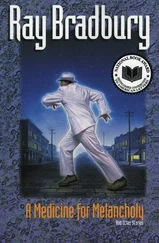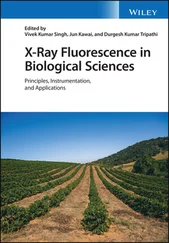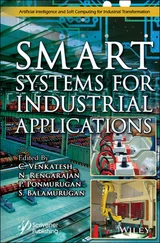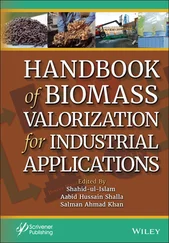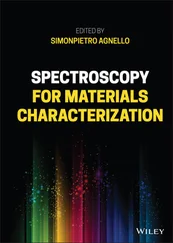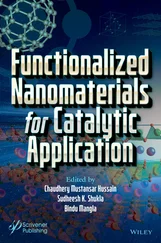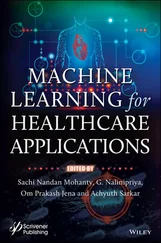3.4.4.4 Quality Criteria for Fusion Beads
Fusion beads of high quality are characterized by good transparency, a flat and smooth surface, and high homogeneity. Depending on the glass former, the fusion beads can be hygroscopic, i.e. their storage in desiccators is recommended if the samples should be available for follow-up measurements.
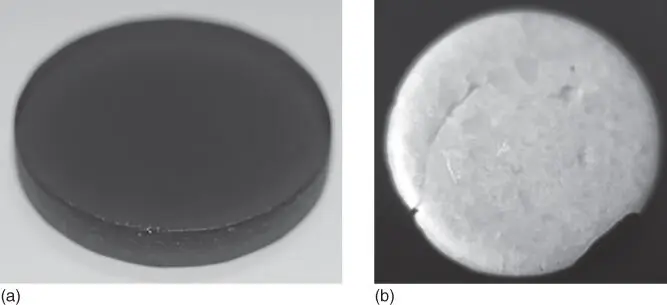
Figure 3.16 Glassy (a) and milky, too quickly cooled fusion bead (b).
The following defects can occur in fusion beads:
Crystallization can occur when a non-suitable flux for the analyzed material is used or when the cooling rate of the beads is too slow.
Cracking occurs if the internal stress in the bead is too high. These can be caused by unsuitable annealing procedures or due to small inclusions, for example, after crystallization in the glassy sample.
Bubbles can be generated if the material contains compounds that are volatile, if the material was not sufficiently dried, if the melt is too viscous, or if the melt captures air inclusions during the pouring process.
Distortion, in cases where the mold has deviations from the correct shape these deviations are then transferred to the fusion bead and can lead, for example, to uneven surfaces.
All these influences must be tested and optimized for the various sample materials as well as for the available equipment.
Examples of a homogeneous (a) as well as a milky and cracked (b) fusion bead that was cooled too quickly can be seen in Figure 3.16.
Fusion beads can increase the analytical accuracy by reducing the matrix interaction as well as the avoidance of mineralogical effects in the sample. For main and secondary components analyses errors down to <0.2% are possible, and for traces <1%. However, it also has to be noted that the manufacturing of a fusion bead requires a relatively high effort in time and money and that the detection limits are decreased by the dilution of the sample with the melting agent.
To take advantage of a higher accuracy, any contamination by touching of the measurement surface of the sample must be avoided. Otherwise, traces of Na, K, Cl, and others will be transferred to the sample, contaminate it, and consequently influence the analytical result. The same care has to be used for pressed pellets.
3.4.4.5 Preparation of Special Materials
The previously described procedures can be used for several material classes. However, for several materials special conditions must be fulfilled to produce fusion beads of high quality (Sear 1997). We will mention a few of them here:
Carbonates: In the case of melting carbonates, the gas produced from the decomposition of the carbonate can have difficulties escaping from the melt because the flux has a lower melting temperature than the carbonate. This means that the gas is blocked by the viscous liquid and consequently produces foam that can completely fill the crucible. Calcium carbonate has a melting point of 900 °C. In this case, tetraborate has to be used since it has a higher melting point. If the flux is a coarse powder the gas can escape through the porous flux (Giles et al. 1995).
Carbon: Pure carbon can be present in small amounts in the various sample qualities. It has to be removed before the fusion process. This is achieved by adding small amounts of ammonium nitrate. This will oxidize the carbon. The unused ammonium nitrate evaporates during the melting process. Its melting temperature is only 170 °C.
Metallic compounds: The metallic particles should be milled to a very fine grain size. They then can be mixed with an oxidizer. Lithium carbonate has been proved to be very efficient. For the fusion procedure 5 g of tetraborate should be melted while the mold is rotated to coat the surface of the mold. Then the melt should be cooled down during rotation until the surface has solidified. Now 0.5 g of the metallic powder together with 1.25 g of LiCO3 can be added on the top of a layer of 1.8 g boron oxide (B2O3). For oxidation and melting of the boron oxide it should be heated to an intermediate temperature, which prevents an outgassing of CO2. After the complete oxidation of the material a standard fusion procedure can follow.
Sulfide minerals: Sulfides are difficult because they can corrode and destroy the mold. This can be overcome by complete oxidation of the sample material to sulfate. The loss of sulfur due to evaporation is problematic, and therefore oxidants have to be used. Depending on the analyte elements potassium pyrosulfate or nitrates of lithium or sodium can be used.Ammonium iodide cannot be used for the improvement of the casting because sulfur evaporates with ammonium.Norrish and Thompson (1990) describe a procedure for the analysis of sulfides. They used 0.26–0.66 g of the sample, mixed that with 6.8 g of a 12 : 22 mixture of tetraborate to metaborate and 1.0 g of sodium nitrate, which was heated to 700 °C in a muffle furnace for 10 minutes with subsequent fusion at 1050 °C.
Liquid samples can be prepared in several ways. For instance, direct measurement of liquids is possible. Liquids can also be prepared by drying through evaporation of the solvents, by absorption, e.g. in cellulose or wax, by precipitation through a chemical reaction, or by filtration.
3.5.1 Direct Measurement of Liquids
For the direct measurement, the liquids are filled into special sample cups (see Figure 3.17). The sample cups are available in several styles, each one designed to fit the different types of instruments; they can have different sizes and can be used with or without a cover. They are made of polymers (PE, Teflon), which inherently are very clean, in order to avoid introducing any foreign measurement signal.
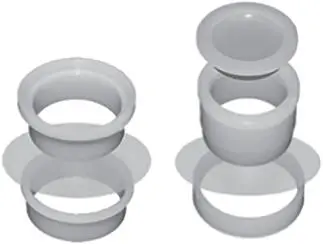
Figure 3.17 Sample cup for the analysis of liquids.
Source: Courtesy of Chemplex Industries, Inc.
The cups are covered with polymer films, which must be pulled tightly onto the cup without any wrinkles; this is important in order to clearly define the distance between sample and spectrometer. On the one hand, the films should absorb the radiation as little as possible, i.e. they must be very thin and consist of elements with low atomic number. On the other hand, they must be stable against the liquids used. For the mostly organic solvents, this requires careful selection and testing before a measurement. It is therefore recommended to test the resistance of the window film of unknown samples, by filling the liquid into the sample cup and placing it on blotting paper for at least twice the measuring time. Thus, it can be verified whether the liquid reacts with the films or not. This is important in particular for wavelength-dispersive (WD) instruments; due to their high excitation intensity the thin films of the sample cup are thermally stressed. It is therefore essential to carry out these tests for WD spectrometers for a sufficiently long period.
This high excitation intensity of WDS instruments can also alter the sample, for example, by decomposition, which can then lead to generating bubbles in the liquid.
The samples should always be filled into the sample cups just before the measurement. For particularly aggressive solvents, it is also advisable to use a double film for covering the cup.
In the case of a defective foil, there is a high risk that the liquid enters the spectrometer, which then can lead to considerable damage, both by potential temperature shock to the X-ray tube and by contamination or reaction of the solvent with the spectrometer components.
Читать дальше



